Shepherds Purse / Spring / Summer / Autumn / Edible
Shepherds Purse is a tasty, native, annual member of the mustard family. The common name comes from the shape of the seed pods which look like old fashioned purses. It’s very common – in fact it’s the world’s 2nd most prolific wild plant.
Common Names
Shepherds Purse, Mothers Heart
Botanical Name
Capsella bursa-pastoris
Scientific Classification
Kingdom – Plantae
Order – Brassicales
Family – Brassicaceae
Physical Characteristics for Shepherds Purse
Leaves
The plant develops two types of leaves, the basal leaves grow from a rosette. These are deeply lobed and look a little like Dandelion leaves. From the centre of the rosette a flowering stalk emerges, the leaves from this are spear shaped and are have much smoother edges.
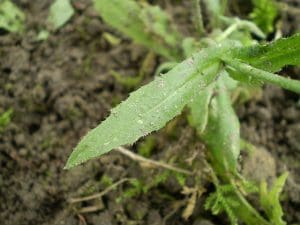
Flowers
The flowers are white and like all Brassicas they form a cross. They grow on top of a straight stem in racemes.
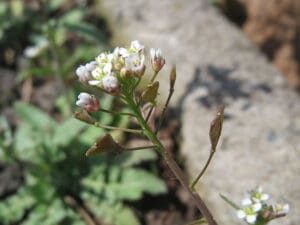
Seeds
The seed pods are heart shaped and look like an old fashioned draw-string purse. The seeds are inside the pods and each plant can produce up to 3000 seeds.
Habitat
It’s one of the most common weeds in the UK and can be found almost anywhere. Most often it’s found on waste ground and the edges of farmers’ fields.
Known Hazards
None known.
Could be Confused with…
With the distinctive seeds pods it would be hard to confuse it with anything else.
Edible Uses
The plant has a lovely spicy, cabbage flavour. The leaves, flowers and pods can be eaten raw or cooked.
In Asia it is grown as a cultivated crop and used is added to rice cakes and wontons.
The dried seeds make a good substitute for black pepper.
Notes on Herbal Uses
It has a long history of use in herbal medicine and is typically taken in the form of teas made from the leaves and seeds. It is said to be useful in treating heart and circulatory problems including mild heart failure, low blood pressure, nervous heart complaints, and headache, vomiting blood, blood in the urine, diarrhoea, and bladder infections.
Women can use the plant to treat premenstrual problems, long periods, and menstrual cramps.
As it’s thought to stem blood flow, the leaves can be applied directly to the skin to treat cuts and nosebleeds.
Extra notes from the Foragers
The plant is classed as a ‘protocarnivore’, since it has been found that its seeds attract and kill nematodes as a means to locally enrich the soil.
References:



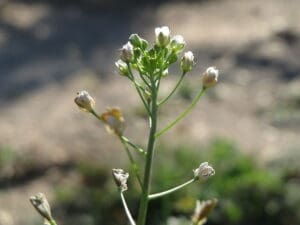
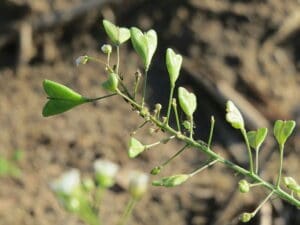
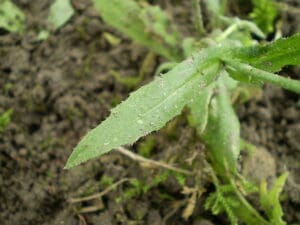
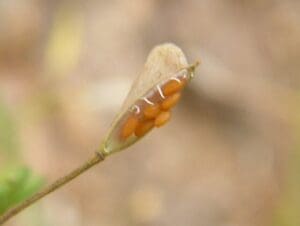
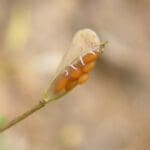
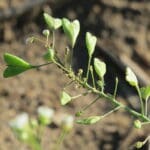



Leave a Reply
You must be logged in to post a comment.